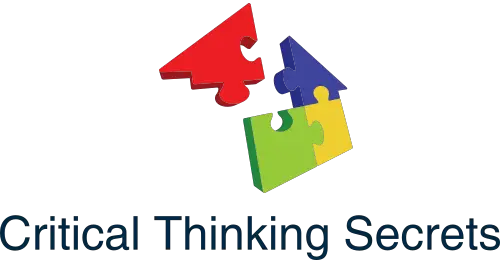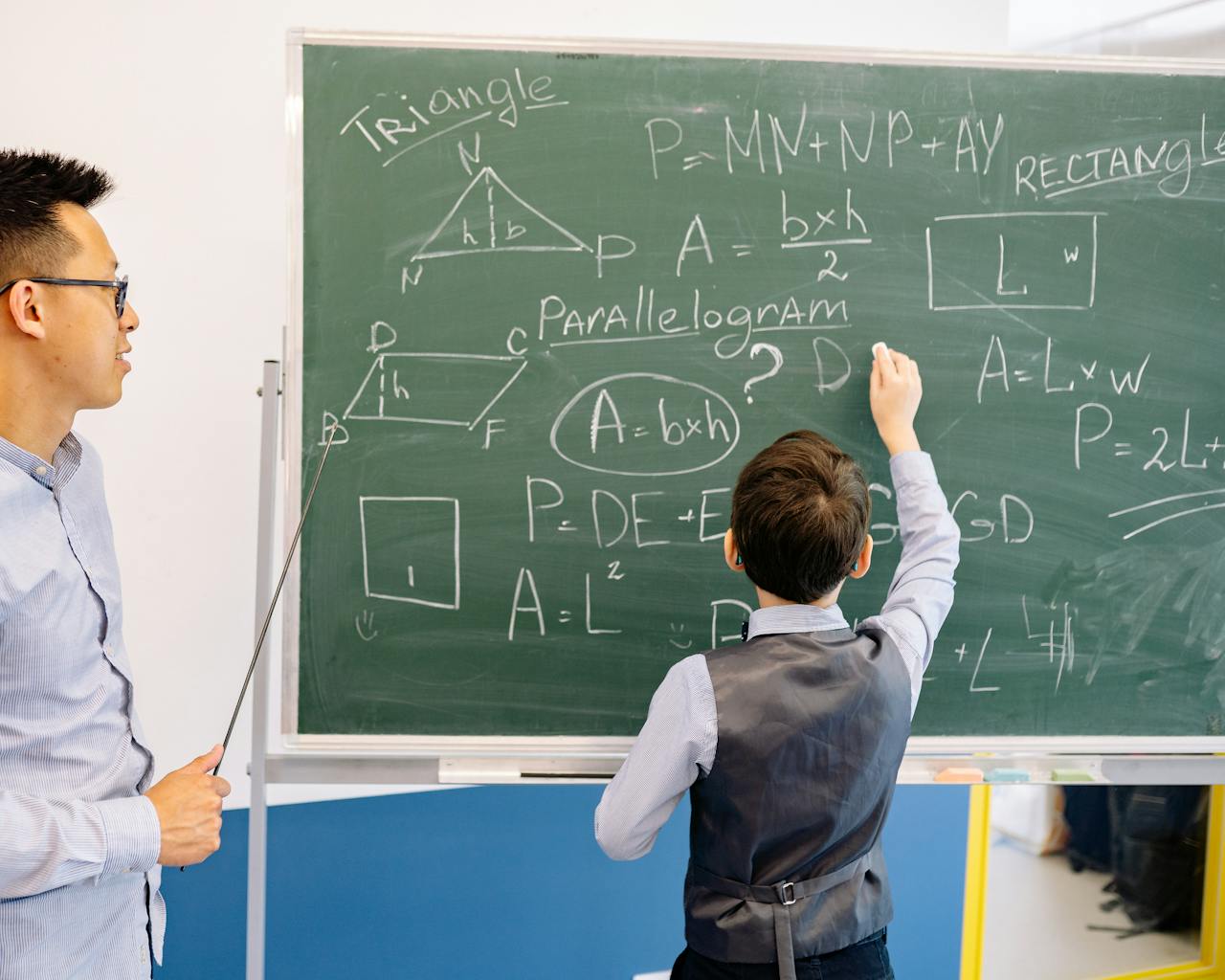
- Search Search Search …
- Search Search …

5 Critical Thinking Techniques for Better Problem-Solving in Everyday Life

Critical thinking skills are essential for effective problem-solving in both personal and professional settings. They enable individuals to analyze situations, consider various outcomes, and make informed decisions. By honing these skills, one can significantly improve their ability to tackle complex challenges.

To cultivate critical thinking , it is important to employ specific techniques that promote sharp and objective analysis. What are some practical ways to develop these skills and enhance problem-solving abilities? This article will explore five key techniques that can help anyone become a more adept problem solver.
1) Think from Multiple Perspectives

Thinking from multiple perspectives means considering various viewpoints when solving a problem. This approach helps uncover hidden factors that may affect the situation. Different perspectives can lead to more creative and effective solutions.
For example, in a business setting, managers can benefit from seeing a problem through the eyes of employees, customers, and stakeholders. This can reveal insights that might not be visible from just one viewpoint.
Incorporating multiple perspectives fosters teamwork and collaboration. It encourages individuals to appreciate diverse opinions and can improve decision-making and leadership styles. Participating in group discussions and brainstorming sessions are practical ways to gather different perspectives.
Critical thinking is essential in this process. It involves questioning assumptions and evaluating the validity of different viewpoints. By doing so, individuals can better analyze complex problems and develop innovative solutions.
Using tools such as mind mapping can also help visualize various angles of a problem. It allows people to organize thoughts and see connections between different perspectives.
Training and courses can further enhance the ability to think from multiple perspectives. Programs like MIT’s problem-solving techniques course provide interactive ways to practice this skill.
In sum, thinking from multiple perspectives enriches problem-solving strategies. It helps identify more comprehensive solutions by considering various factors and viewpoints. This approach is valuable in personal, professional, and academic settings.
2) Question Assumptions

Questioning assumptions is a key step in critical thinking and problem-solving . Everyone has beliefs and ideas they accept without much thought. By challenging these assumptions, individuals can uncover hidden biases.
When people question their assumptions, they open the door to new perspectives. It allows them to see problems from different angles. This leads to better solutions and more effective decision-making.
Examining assumptions means asking questions like, “Why do I believe this?” or “What evidence supports this idea?” This practice helps in identifying weak spots in one’s thinking. It also helps in distinguishing between facts and opinions.
Using this technique can prevent mistakes. By not taking things at face value, individuals ensure that they base their decisions on sound reasoning. This approach fosters a culture of continuous learning and improvement.
Questioning assumptions is not about being negative. It’s about being curious and open-minded. When assumptions are questioned, it leads to more robust and resilient solutions. This method is a powerful tool in both personal and professional settings.
For more insights into questioning assumptions and its importance in critical thinking, check out this article .
3) Analyze the Evidence
When approaching a problem, it is crucial to look at the evidence available. This involves gathering information from reliable sources.
Critical thinking requires examining the quality of the evidence. This means checking the source’s credibility and looking for any biases.
Next, evaluate the relevance of the information. Determine how the evidence directly relates to the problem at hand.
It’s also important to compare different pieces of evidence. This can help identify any contradictions or inconsistencies.
Additionally, use logical reasoning to interpret the evidence. This involves drawing conclusions based on the facts presented.
By carefully analyzing evidence, one can make more informed decisions and solve problems effectively.
Resources like NCBI and the University of Tennessee offer insights on critical thinking and evidence evaluation.
4) Identify Biases
Critical thinkers must recognize biases to improve decision-making. Biases are prejudices that lead to unfair judgments. They can come from personal opinions, values, or past experiences.
Evaluating information involves identifying explicit biases. These are obvious prejudices, such as racism or sexism. For example, believing one group is inferior shows explicit bias. It is crucial to spot these clear biases to maintain objectivity.
Implicit biases are harder to see because they are unconscious. These biases affect judgments without awareness. Understanding implicit biases requires self-reflection and continuous learning.
To identify biases, critical thinkers must question their assumptions. They should ask if their beliefs are based on facts or influenced by personal views. Analyzing the credibility of sources also helps reveal biases.
Recognizing biases helps in making fair and informed decisions. It prevents personal prejudices from clouding judgment. Achieving objectivity is key to effective problem-solving skills.
Learn more about recognizing bias and how it impacts decisions. Understanding the types of biases can improve one’s ability to think critically and solve problems effectively .
5) Consider Alternative Solutions
Considering alternative solutions is a key part of critical thinking . Evaluating different options allows individuals to find the best possible outcome. By looking at multiple solutions, one avoids tunnel vision and opens the door to creativity.
Examining various perspectives can help in identifying biases. This ensures decisions are not clouded by personal preferences. It also helps in uncovering solutions that might not have been immediately obvious.
Brainstorming is a common method to generate alternative solutions. This can be done individually or in groups. The more ideas generated, the higher the chances of finding a viable solution.
When evaluating alternatives, it is important to weigh the pros and cons of each. This involves assessing the feasibility, risks, and potential impact of each option. By doing so, one can make more informed decisions.
Using critical thinking strategies helps individuals to consider new angles and possibilities. It promotes a systematic approach to problem-solving, ensuring no stone is left unturned. By incorporating these methods, problem solvers develop a structured way of thinking.
Employing these strategies in everyday situations can improve problem-solving skills. Over time, individuals become more adept at considering alternatives and making the best decisions.
Understanding Critical Thinking
Critical thinking involves analyzing and evaluating information or arguments in a disciplined and informed manner. It is essential for problem-solving, decision-making, and for making well-reasoned judgments.
Definition and Importance
Critical thinking is the ability to think clearly and rationally, understanding the logical connection between ideas. It involves the disciplined application of logic to solve problems and make decisions. This skill is crucial because it helps individuals to reason through complex issues, question assumptions, and arrive at well-founded conclusions.
Critical thinkers are capable of evaluating their own beliefs and adjusting them in light of new evidence. It’s important in many aspects of life, from making everyday decisions to tackling major projects.
Components of Critical Thinking
Critical thinking consists of several core components. Observation , entails gathering data through senses or instruments. Analysis is breaking down complex information into simpler parts to understand it better. Inference involves drawing logical conclusions from available data.
Evaluation deals with assessing the credibility and relevance of information or arguments. Finally, explanation requires clearly and concisely communicating your reasoning and conclusions.
Together, these components help individuals engage in reflective and independent thinking, leading to well-informed and reasoned decisions. Critical thinking is not about knowing everything but about asking the right questions to get the best possible answers.
Application of Critical Thinking in Problem-Solving
Applying critical thinking to problem-solving involves analyzing the issue at hand and developing viable solutions. This approach ensures that decisions are well-thought-out and effective.
Analyzing Problems
Analyzing problems is the first step in critical thinking. It involves clearly defining the problem and identifying its root causes. A problem is seen as a gap between the current situation and the desired outcome.
Effective analysis requires gathering relevant information and questioning assumptions. It’s crucial to look at the problem from multiple angles to understand its full scope. By breaking down the problem into smaller parts, it’s easier to tackle each aspect systematically.
Critical thinking also involves prioritizing issues based on their impact and urgency. This ensures that the most pressing problems are addressed first. Defining the problem accurately is crucial for the next steps in problem-solving.

Developing Solutions
Once the problem is analyzed, the next step is to develop solutions. This involves generating a range of possible solutions and evaluating them based on feasibility, effectiveness, and potential consequences.
It’s important to use structured methods like brainstorming and SWOT analysis (Strengths, Weaknesses, Opportunities, Threats) to generate ideas. Each potential solution should be critically assessed for strengths and weaknesses.
Choosing the best solution requires careful consideration of the available data and weighing the pros and cons. Implementing the solution and reflecting on its outcomes are also parts of this process. By continuously evaluating and refining the chosen solution, one can achieve the best possible results.
Benefits of Critical Thinking Techniques
Critical thinking techniques offer many benefits, including enhancing decision-making and fostering creativity. These skills are essential in both personal and professional life, providing a stronger foundation for success.
Enhancing Decision-Making
Critical thinking techniques help individuals make better decisions by analyzing information more thoroughly. These techniques involve questioning assumptions, evaluating evidence, and considering various perspectives.
For example, when faced with a problem, one can list pros and cons to weigh different options. This process helps to avoid biases and make more rational choices. According to Mind Tools , collecting and evaluating information is key to effective decision-making.
Using these techniques, individuals can anticipate potential outcomes and mitigate risks. This leads to more informed and confident decisions, whether in business or daily life.
Fostering Creativity
Critical thinking also plays a vital role in fostering creativity . By questioning existing ideas and exploring various solutions, it encourages innovative thinking.
For instance, brainstorming sessions can benefit from critical thinking by pushing participants to go beyond conventional ideas. This helps generate original concepts and approaches. As noted by Future Focused Learning , critical thinking is a multi-faceted practice that cultivates a range of cognitive talents.
Employing these techniques, individuals can break free from traditional problem-solving methods. This flexibility and openness to new ideas drive creative solutions and breakthroughs in various fields.
Challenges to Effective Critical Thinking
Critical thinking often encounters obstacles that can interfere with the process. Two significant challenges are overcoming biases and dealing with information overload.
Overcoming Biases
Biases can skew judgment and affect decision-making. People often have unconscious biases that shape their perspectives. These can come from personal experiences, culture, or general assumptions.
To challenge biases, one must first recognize them. Reflecting on one’s beliefs and assumptions helps in identifying biases. Asking others for feedback can also provide fresh perspectives and reveal hidden biases.
Another strategy is to seek out diverse opinions and viewpoints. This broadens understanding and reduces the influence of any one perspective. Critical thinkers should also question their initial assumptions and be open to changing their minds based on new evidence.
Dealing with Information Overload
Today’s digital age offers vast amounts of information, which can overwhelm critical thinkers. Managing this information effectively is crucial for sound decision-making.
One approach is to prioritize information. Not all data is equally important; focus on sources that are most relevant and reliable. Using checklists or criteria can help evaluate the credibility of information.
Additionally, critical thinkers should develop strong organization skills. Keeping information well-organized can prevent being swamped by details. Tools like digital note-taking apps and databases can help manage large amounts of information efficiently.
Regularly taking breaks and setting aside time for reflection can also prevent burnout and maintain mental clarity. This allows for better processing and understanding of information. By adopting these strategies, critical thinkers can navigate the complexities of information overload.
You may also like

10 Steps to Develop a Critical Thinking Mindset: Essential Tips for Success
Critical thinking is an essential skill that helps individuals make better decisions, solve problems efficiently, and understand the deeper meaning behind information. […]

5 Board Games to Develop Critical Thinking Skills
Do you know why board games are called that way? It’s because you only play them when you’re bored. Lousy puns aside, […]

Can Critical Thinking Be Taught?
Have you ever wondered if critical thinking can be taught? Critical thinking is certainly teachable, as has been proven by many years […]

10 Real-Life Examples of Critical Thinking in Action: Practical Applications in Daily Life
Critical thinking is an essential skill that can be applied in various aspects of daily life. This skill involves analyzing information, evaluating […]

IMAGES
COMMENTS
Aug 5, 2022 · Read more about critical thinking and other essential skills in my new book, Future Skills: The 20 Skills & Competencies Everyone Needs To Succeed In A Digital World. Written for anyone who wants ...
Sep 21, 2024 · Problem-solving often requires critical thinking to implement the best solution and understand whether or not the solution is working as it relates to the goal. Improve your problem-solving skills by setting goals to acquire more industry knowledge within your field.
business use for critical thinking. In 2006, we rolled out our first workshop, “critical Thinking for Problem Solving and Decision Making.” Whom Is This Book for? You might be wondering whether this book is worth your time. consider this: thinking is the foundation of everything we do. Whether you’re a
Application of Critical Thinking in Problem-Solving. Applying critical thinking to problem-solving involves analyzing the issue at hand and developing viable solutions. This approach ensures that decisions are well-thought-out and effective. Analyzing Problems. Analyzing problems is the first step in critical thinking.
Oct 8, 2024 · Critical thinking is a crucial skill that enhances your ability to navigate the complexities of life. By mastering the six main types of critical thinking skills—analysis, interpretation, inference, evaluation, problem-solving, and decision making—you can make better decisions, solve problems efficiently, and become a more effective ...
Jul 21, 2019 · Critical thinking and problem solving have always been useful at work, but employers will increasingly look for these skills as jobs become more complex and challenging due to ever-evolving technology and globalisation. Continue to assign yourself problems to tackle; even minor issues will help you keep your critical skills sharp. 10.